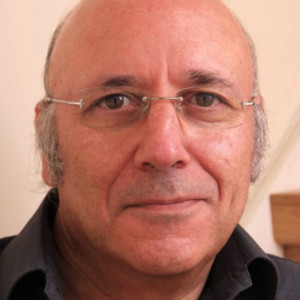Britain is made up of a collection of unique peoples and traditions, so it comes as no surprise that with such a rich history to draw from, it’s one of the most renowned sources of literature, and more specifically, poetry. That’s the topic of this article, where we’ll be exploring some of the most famous and iconic poets who hail from the British Isles, including historical names and others whose fame is more contemporary.
| British Poets | Poetry Style/Genre | Poetry Period | Notable Works | What Makes Them Special |
|---|---|---|---|---|
| William Shakespeare | Renaissance, Drama, Sonnets | 16th – 17th century | Sonnets, Hamlet, Macbeth | Master of dramatic poetry and iambic pentameter; introduced innovative metaphors and universal themes in both plays and sonnets. |
| William Wordsworth | Romantic, Nature Poetry | Late 18th – Early 19th century | Lyrical Ballads, The Prelude | Pioneer of Romanticism; focused on nature, emotion, and the ordinary life of humans; championed the poetic expression of personal experience. |
| Emily Brontë | Romantic moving towards Victorian, Gothic | 19th century | Poems by Currer, Ellis, and Acton Bell | Known for intense emotional depth, gothic imagery, and exploring themes of isolation, nature, and passion. |
| Elizabeth Barrett Browning | Victorian, Romantic Influence | 19th century | Sonnets from the Portuguese, Aurora Leigh | Famous for her passionate love poetry and social commentary; one of the first prominent female poets of her era. |
| Dylan Thomas | Modernist, Lyric Poetry | 20th century | Do Not Go Gentle into That Good Night, Under Milk Wood | Renowned for musicality of language, vivid imagery, and emotive intensity; blends modernist experimentation with traditional forms. |
| Roald Dahl | Children's Poetry, Humorous Verse | 20th century | Revolting Rhymes, Dirty Beasts | Famous for playful, darkly humorous poems aimed at children; inventive wordplay and fantastical storytelling. |
| Edwin Morgan | Contemporary, Concrete Poetry, Experimental | Late 20th – 21st century | The Second Life, Sonnets from Scotland | Known for linguistic experimentation, blending visual form with sound; championed Scottish voices and innovation in poetic structure. |
| Benjamin Zephaniah | Contemporary, Performance Poetry, Reggae Influence | Late 20th – 21st century | Talking Turkeys, Refugee Boy | Brings political and social themes into spoken word and performance; blends rhythm, Jamaican patois, and activism. |
| Carol Ann Duffy | Contemporary, Feminist, Narrative Poetry | Late 20th – 21st century | The World’s Wife, Rapture | Explores gender, identity, and social issues; combines wit, narrative, and accessibility; first female UK Poet Laureate. |
| Sir Thomas Wyatt | Renaissance, Courtly Love, Lyric Poetry | 16th century | Whoso List to Hunt, They Flee from Me | Introduced the sonnet to England; blended courtly love traditions with personal reflection and emotional subtlety. |
| Alfred, Lord Tennyson | Victorian, Epic and Lyric Poetry | 19th century | In Memoriam A.H.H., Ulysses, The Lady of Shalott | Master of lyrical expression; combines myth, history, and philosophical reflection with polished meter and form. |
| Lord Byron | Romantic, Satirical and Narrative Poetry | 19th century | Childe Harold’s Pilgrimage, Don Juan, She Walks in Beauty | Known for passionate, rebellious, and often scandalous themes; iconic figure of Romanticism and the Byronic hero. |
| John Keats | Romantic, Lyric Poetry, Odes | 19th century | Ode to a Nightingale, To Autumn, Ode on a Grecian Urn | Celebrated for sensuous imagery, emotional intensity, and philosophical reflection on beauty and mortality. |
| Simon Armitage | Contemporary, Lyric and Narrative Poetry | Late 20th – 21st century | The Shout, Kid | Current Poet Laureate; known for accessible language, contemporary themes, and blending spoken-word influence with traditional forms. |
| Imtiaz Dharker | Contemporary, Feminist, Multicultural Poetry | Late 20th – 21st century | Postcards from God, The Terrorist at my Table | Explores identity, migration, and cultural hybridity; lyrical and socially aware work that blends personal and political. |
| Felicia Hemans | Romantic, Lyric, Patriotic Poetry | Late 18th – Early 19th century | The Homes of England, Casabianca | Popular in her era for lyrical, emotive verse; explored domestic, historical, and patriotic themes with sensitivity and grace. |
| Malika Booker | Contemporary, Spoken Word, Performance Poetry | 21st century | Breadfruit, Pepper Seed | Blends storytelling, performance, and activism; celebrated for rhythm, voice, and engagement with social issues. |
| Clare Pollard | Contemporary, Feminist, Narrative Poetry | Late 20th – 21st century | The Smell of Our Own, Human Scale | Known for exploring everyday life, domesticity, and feminist perspectives; combines lyricism with narrative clarity. |
| Thomas Hardy | Victorian / Modernist, Narrative Poetry | Late 19th – Early 20th century | Poems of 1912–13, Wessex Poems | Also a novelist; explores rural life, human suffering, and mortality with lyrical power. |
| Seamus Heaney | Contemporary / Modernist, Nature & History Poetry | 20th – 21st century | Death of a Naturalist, Station Island | Nobel Laureate; vivid imagery, rooted in place and history; combines lyricism with cultural reflection. |
| Ted Hughes | 20th Century, Nature, Myth, Narrative Poetry | 20th century | Crow, Birthday Letters | Poet Laureate; blends raw imagery, myth, and natural themes; influential voice in modern British poetry. |
| W.H. Auden | 20th Century, Modernist, Socially Engaged Poetry | 20th century | Funeral Blues, The Shield of Achilles | Known for socially and politically engaged poetry; versatility across forms and themes. |
| Alice Oswald | Contemporary, Nature and Experimental Poetry | 21st century | Dart, Memorial | Focuses on nature, epic forms, and oral storytelling; experimental style with lyrical depth. |
| Wilfred Owen | 20th Century, War Poetry | Early 20th century | Dulce et Decorum Est, Anthem for Doomed Youth | Iconic First World War poet; captures the horrors and futility of war with stark realism and emotion. |
| Siegfried Sassoon | 20th Century, War Poetry | Early 20th century | Counter-Attack, The Old Huntsman | Satirical and critical style; complements Owen in exploring the realities of WWI. |
| Andrew Motion | Contemporary, Narrative & Lyric Poetry | Late 20th – 21st century | The Lamberts, Selected Poems | Former UK Poet Laureate; combines narrative, personal reflection, and accessibility in modern poetry. |
| Rupi Kaur | Contemporary, Spoken Word / Digital-Age Poetry | 21st century | Milk and Honey, The Sun and Her Flowers | Instagram-famous; resonates with younger audiences; short, emotive free verse blending personal and feminist themes. |
| Carolyn Forché | Contemporary, Political / Activist Poetry | Late 20th – 21st century | The Country Between Us | Influential for politically engaged and human-rights-themed poetry; adds international and activist perspective. |

Sir Thomas Wyatt: The Pioneer Of The English Sonnet
Sir Thomas Wyatt is often credited with bringing the Italian sonnet form into English literature during the Renaissance. A courtier and diplomat under King Henry VIII, Wyatt’s poetry reflects both the elegance of courtly love and the dangers of political life in Tudor England.
His works, especially his sonnets, introduced English readers to the style of Petrarch while also pioneering a distinctly English voice in lyric poetry. Poems like Whoso List to Hunt are thought to reflect his own turbulent experiences at court, giving his writing an enduring edge of intensity and intrigue.
William Shakespeare: The Most Famous Name in Western Poetry
William Shakespeare can be defined by many labels, such as playwright and poet, which are the most common, but also as an actor and a man of business and fiscal venture. Across his career, he wrote at least 38 plays and participated as both director and actor in his own plays as well as the works of other writers. The reason why Shakespeare makes this list, however, is due to the 154 sonnets he published, while also creating a number of other poems.
Adding this volume of poetry to the plays, which were mostly written in poetic verse as well, it’s easy to see why he is regarded as one of, if not the greatest English poet of all time. His poetry focuses on the human experience, with an emphasis on romance and tragedy. His writings are known for being vivid, descriptive, and emotional. His plays offer an insight into the best and worst of human nature and apply a dramatic lens to both real and fictional events.
William Wordsworth: A Figurehead of the Romantic Movement
William Wordsworth was a poet whose central themes included a remarkable affinity for nature, which he gained while growing up surrounded by the beauty of the Lake District. He employed more inclusive ‘everyday’ vocabulary, which is one of the reasons his work appealed so greatly to the wider public. His most famous work is a poem called “Daffodils”, which he was inspired to write after he and his sister Dorothy came across a long belt of indigenous Welsh flowers while walking in the forest.
Wordsworth's works represented the burgeoning Romantic movement in poetry, which is characterised by its focus on the subject of real, everyday people and the motions of life. Additionally, William Wordsworth is also known as one of the key figures of the Big Six of the Romantic Movement in England alongside Samuel Taylor Coleridge, John Keats, Lord Byron, Percy Bysshe Shelley, and William Blake.
John Keats: The Eternal Dreamer of the Romantic Movement
John Keats, one of the greatest Romantic poets, lived a short but profoundly influential life. Though he died at only 25, his body of work is celebrated for its rich imagery, musicality, and meditations on beauty, mortality, and the human experience.
Keats’s odes—particularly Ode on a Grecian Urn and Ode to a Nightingale—remain among the finest achievements in English poetry. His ability to find transcendent meaning in fleeting moments gave his verse a timeless quality, ensuring his enduring place among the most beloved poets in British literary history.
Lord Byron: The Rebel Hero of Romanticism
Lord Byron was one of the most flamboyant and notorious figures of the Romantic movement. Known for his passionate verse and equally passionate lifestyle, Byron’s poetry embodies themes of love, adventure, and rebellion against convention.
His works, such as Childe Harold’s Pilgrimage and Don Juan, blend autobiographical elements with sweeping narratives, establishing the archetype of the “Byronic hero”—a brooding, charismatic outsider. Byron’s poetic legacy is inseparable from his larger-than-life persona, making him both a literary and cultural icon.
Alfred, Lord Tennyson: The Laureate of the Victorian Age
As Poet Laureate during much of Queen Victoria’s reign, Alfred, Lord Tennyson became the voice of an age. His poetry captures both the grandeur and the anxieties of the Victorian era, blending classical themes with deep emotional resonance.
Tennyson’s mastery of rhythm and imagery made his poems some of the most quoted in English literature. Works such as Ulysses and In Memoriam A.H.H. explore grief, perseverance, and the search for meaning, while The Charge of the Light Brigade immortalised a moment of military heroism. His influence on British poetry remains profound and far-reaching.

Emily Brontë: Darkness and Beauty in British Literature
Born in West Yorkshire in 1818, Emily Brontë grew up in the isolated but beautiful Haworth Moor. Her father was a clergyman, and her mother tragically died when she was only three years old. Fortunately, she was not alone as one of six siblings.
As for her poetry, she has also published it under a pseudonym. She collaborated with her sisters to deliver a collection of poetry full of beauty and mystery, inspired by the seclusion and mystery of her troubled past. It's a shame that Emily only made it to the age of 30 due to tuberculosis. Otherwise, we might have been treated to more of her intriguing talent, but her contributions to the literature world are a testament to the creativity and intellect of women which was suppressed by a misogynist world.
Elizabeth Barrett Browning: Expressive Sentimentalist
Elizabeth Barrett Browning is the epitome of a true literary warrior who battles against different odds — her role as an uprising female poet, her on-and-off physical health, and the objection of her father towards her marriage. As a child, Browning showed promising flair in writing and was an avid reader, especially when it came to new ideas on feminism and social class. When her health deteriorated, she turned to literature and poetry as her main solace — eventually making her mark as one of the most famous female poets in England.
Browning's life took a drastic turn when she fell in love with Robert Browning, another fellow English poet who admired her writings. Due to her father's disapproval of their marriage, the couple left England and eloped to Italy and began a new life there. Their strong marriage inspired Browning to produce some of her best sonnets in romance, which are still loved by many today.
Dylan Thomas: Rich Lyricism from the Welsh Countryside
As the son of a grammar school teacher, Thomas was introduced to literature at a young age and received plenty of guidance and encouragement in his youth. It comes as no surprise that the Welsh youth attended a grammar school himself, where he started his hobby of poetry. His first published poem is titled “Death shall have no dominion”. His poetry style often focused on the struggle against death and the overcoming of challenges and difficulties in life, and this was evident even in his earliest work.
Thomas’s work was known to focus on dark subject matters, but he offset this with his bright and vivid vocabulary, which helped him paint beautiful yet sinister linguistic depictions of life, death and the steady march of time. His passion for his work was communicated through his enthusiastic recitations, which he would perform frequently to audiences, even travelling to the US to recite his poetry and spreading his popularity overseas.
Roald Dahl: An Icon of Children’s Literature
In his youth, Dahl went through a great deal. First losing his father and sister at the very young age of three, he later found himself embroiled in the Second World War as a British fighter pilot in the Royal Air Force. The darkness of the loss he saw in war and childhood would serve as fuel for his early writing, which was actually aimed at an adult audience and contained darker themes.
While he was a gifted writer with a good sense for the grotesque and macabre, he would find his true fulfilment and eventual success when he channelled his creativity into more light-hearted works for children. Even though his works were mainly books, the reason he makes this list is because his books were littered with charming poetry that helped his stories be all the more memorable in England and outside England.
Edwin Morgan: Inventive Wordsmith From Scotland
Edwin Morgan is a household name in the Scottish literary scene and is especially known for his dedication to the concrete poetry movement. Concrete poetry is where the structure of the words takes the form of shapes and images through the utilisation of spaces and pauses in the English language. One of Morgan's wittiest concrete poems, Siesta of a Hungarian Snake mimics the shape of a snake through the placement of a combination of lower and upper letters.
Besides being a talented poet, he is also fluent in the French and Russian languages — making him a prolific translator of many different literary works. He was also extremely explorative and inventive by incorporating elements of space exploration and mysticism in his poetry. Morgan was not only made the Glasgow Poet Laureate in 1999 but also received the honours of becoming Scotland's first-ever Makar (National Poet) in 2004.
Carol Ann Duffy: The Voice of Modern British Poetry
Carol Ann Duffy is one of the most celebrated voices in modern British poetry, best known for her sharp wit, feminist perspectives, and ability to give a voice to the overlooked and silenced. Duffy became the first female Poet Laureate of the United Kingdom in 2009, a role she held for ten years. Her work is often studied in schools and universities, not only for its lyrical beauty but also for its accessibility, emotional depth, and social commentary.
Her poetry frequently explores themes of love, loss, gender, and identity, often reimagining historical and mythical figures through a contemporary feminist lens. In collections like The World’s Wife, she retells stories from the perspective of women who are traditionally sidelined in literature and history. Poems such as Valentine and War Photographer showcase her talent for combining striking imagery with everyday language, making her work both profound and relatable. Duffy’s contribution has cemented her place as one of the most influential British poets of the 20th and 21st centuries.
Benjamin Zephaniah: Life and Rhymes of The British Soul
Fans of the performance poetry scene in the United Kingdom would definitely know about Benjamin Zephaniah. A man of many hats, crafted words remain Zephaniah's one true love. He has a knack for turning written words into powerful performances through his amazing delivery and embedded themes of topics like anti-racism, representation of British history, and animal rights.
Zephaniah has published several collections of poetry for the younger generation and even took up the role of appointed professor of poetry and creative writing at Brunel University London. In 2008, he was listed by the Times as Britain's top 50 Post-war writers.
Embark On A Literary Adventure With Superprof
A poem is the very image of life expressed in its eternal truth.
Percy Bysshe Shirley
We hope you enjoyed this article about the most famous poets in British literature. Among these poets, who is your favourite? Whether you want to learn about the poets mentioned in this list or other established poets of different poetry eras in the United Kingdom, such as Sir George Hebert, James Shirley, John Keats, Samuel Taylor Coleridge, or Charles Causley, you are bound to have a wonderful literary experience with the help of Superprof.
Who is your favourite British poet from this list?
Superprof is a service that aims to connect students and learners with the tutors they need to further their learning efforts. If that’s you, don’t hesitate to check out our service so you can get in touch with the best English literature tutors available near you in the United Kingdom. If you want to read more about English literature, or a whole range of different subjects, make sure that you check out our other articles, here on the Superprof blog.
















Truly, the poems picked soothes the soul
Of love and life one cherishes with
Of domain one is opaque,
The other has little to hide
But both do build gradeour
Of the scape of so called society
These aspects entwine with the nature
So as each of which replica of the other
Not really because I don’t like reading, but it helped me with my school work